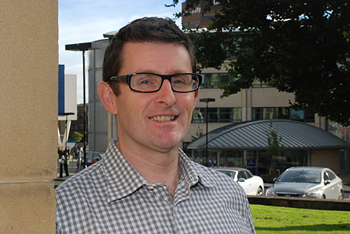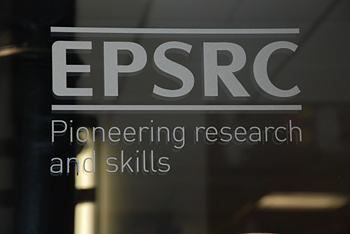£1m project to produce safer oxygen
Thu, 16 May 2013 13:29:00 BST
Prototype reactor vessel planned in research to make oxygen safer to use in chemical processes
 A SAFE way to use oxygen during chemical processes would bring enormous economic benefits to manufacturers in fields such as pharmaceuticals. But the high flammability of oxygen means that the risks often outweigh the advantages.
A SAFE way to use oxygen during chemical processes would bring enormous economic benefits to manufacturers in fields such as pharmaceuticals. But the high flammability of oxygen means that the risks often outweigh the advantages.
Now a University of Huddersfield professor (pictured) is to collaborate in a £1 million project which aims to unlock the potential of oxygen. The Engineering and Physical Sciences Research Council (EPSRC) has provided funding, with the aim that UK manufacturers will benefit from research findings.
Joe Sweeney is Professor of Catalysis and Chemical Biology at Huddersfield, and he will collaborate with fellow scientists at the University of Leeds, University College London and Imperial College. The goal is to design and build the prototype of a reactor vessel that will demonstrate how oxygen can safely be used in manufacturing processes.
Major companies have already signalled their interest in the project, which will be a prime example of academic research providing a boost to the UK economy, said Professor Sweeney.
He explained that many processes, including medicines manufacture, use compounds which need to be oxidised, but at present, despite the environmental advantages, there are no methods that use oxygen effectively, because of the safety issues involved.
Therefore most oxidation is carried out using metal-based oxidants that are often highly toxic and produce large quantities of waste. Alternatively, an industrial process is lengthened – and therefore made more costly – in order to avoid oxidation.
 “So if you could use oxygen, where the by-product of the oxidation process is water, that would be a significant advantage. It would be more economically viable and it would be cleaner,” said Professor Sweeney.
“So if you could use oxygen, where the by-product of the oxidation process is water, that would be a significant advantage. It would be more economically viable and it would be cleaner,” said Professor Sweeney.
“The problem is not that oxygen itself is intrinsically flammable,” he continued. “But oxygen solvent mixtures are extremely flammable. So what our grant is about is using a reactor, containing solid catalysts, which will allow for oxygen to be diffused at a low concentration into a solvent stream and pass over a catalyst where the reaction will take place, so that at any one time the concentration of oxygen will be low enough to minimise danger. The driving force is the fact that if you can harness oxygen it is a very clean reagent.”
Professor Sweeney will be collaborating on research into the organic reactions that will take place in a reactor that will be subsequently designed by the chemical engineers who are participating in the project. A research fellow is to be appointed at the University of Huddersfield and the project will be completed – with the delivery of a prototype reactor – within two years.
“This project is a really good way to demonstrate very quickly the relevance of academic research,” said Professor Sweeney. “Our partners are very high-profile institutes, which is a reflection of the excellence of the research we are doing at the University of Huddersfield.”
It is hoped that the consortium, which has been awarded the EPSRC funding, will form a lasting partnership that will work on future research challenges. “This project is just the starting point,” said Professor Sweeney.







